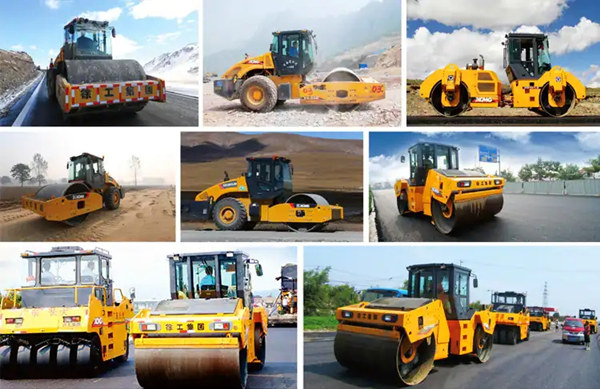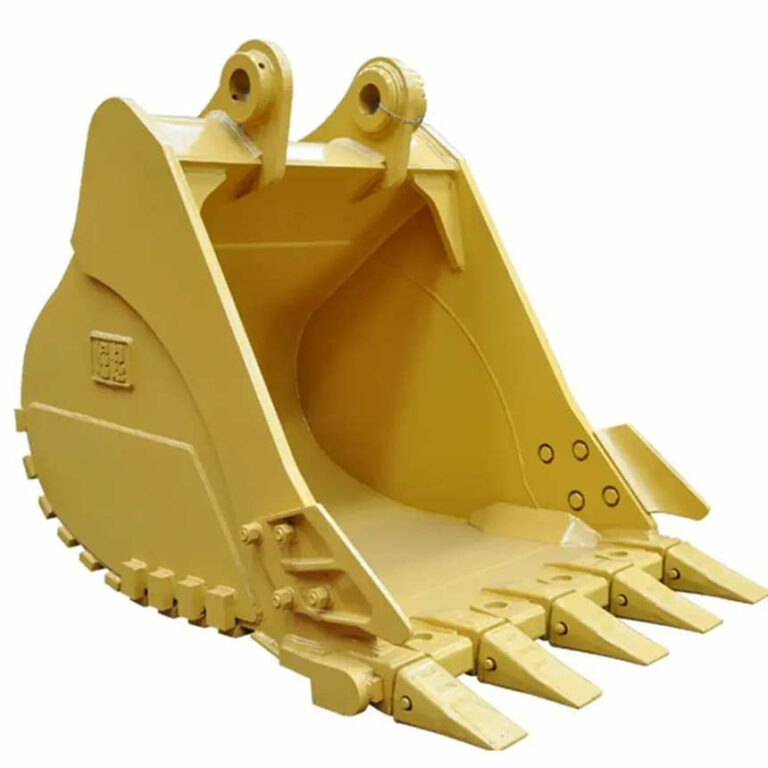How to choose a road roller?
Select the roller according to the project quality requirements
For uniform compaction density, tire rollers can be used. The tire-type road roller does not destroy the original viscosity of the soil when rolling, and the soil layers have good bonding performance. Plus the front wheel can swing, so the compaction is more uniform and there will be no false compaction. If you want to make the road compacted and leveled, you can choose a full-drive road roller. In areas where the compaction capacity of the roller is not high, the roller with lower line pressure and flexibility can be used. To achieve the compaction effect as soon as possible, a large-tonnage road roller can be selected to shorten the construction period.
Select the road roller according to the thickness of the layer
When rolling asphalt concrete pavement, the weight, amplitude and vibration frequency of the roller should be selected according to the paving thickness of the mixture. Usually, on the thin layer with the layer thickness less than 60mm, it is better to use a small vibratory roller with an amplitude of 2~-6t with an amplitude of 0.35~0.60mm, so as to avoid the phenomenon of stacking, wave and damage to the aggregate; At the same time, in order to prevent the asphalt mixture from being too cold, rolling should be carried out immediately after paving. For thick layers with thickness greater than 100mm, large and medium-sized vibratory rollers with high amplitude (up to 1.0mm) and 6~10t should be used.
Select the road roller according to the road type (grade)
For the first- and second-class national trunk roads and vehicle-specific roads, a large vibratory roller with a high compaction capacity of 6-10t should be used; for the roads below the third-class, or when the compaction operation is not performed frequently, it is better to be equipped with 2t Maneuverable and flexible vibratory rollers left and right. For cement concrete pavement, tire-driven tandem vibratory rollers can be used; for asphalt concrete pavements, full-drive vibratory rollers should be used; for the bottom layer of high-grade pavement subgrades, it is best to use tire-driven rollers or tire-driven vibratory rollers for compaction to obtain Uniform compactness: Static-action smooth rollers can be used when repairing the road surface.
Select the roller according to the type of material to be pressed
For the compaction of rockfill, a large tonnage roller should be used to displace large blocks; for the compaction of clay, it is best to use a bump tamping roller; for the compaction of the mixture, it is best to choose a vibratory roller To make the large and small particles evenly blended; for deep compaction, a heavy-duty vibratory roller should be used for slow-rolling, and shallow layers, a static-action roller should be used.
Material types for different road rollers
Type | large rock /cobblestone /gravel | Gravel soil | Sand | sandy soil | Clay | Gravel clay | Soft clay | Hard clay |
Roller | A | A | A | A | B | B | C | C |
Self-propelled tire rollers | B | A | A | A | A | A | C | B |
Trailed tire rollers | B | A | A | A | A | A | C | B |
Sheep foot roller | C | C | B | B | B | B | C | A |
Vibratory roller | A | A | A | A | C | B | C | C |
Notes: A – best applicable; B – can be replaced when there is no other machine; c—Not applicable.
How to choose a vibratory roller
- Select the tonnage model according to different projects (see the table below)
Type | Machine weight (Ton) | Working width (cm) | Applicable job types |
Small | 1-1.5 | 40-100 | Trench backfill, footpaths, park roads, road maintenance |
Sentenced | 4.5-6 | 160-180 | Urban roads, sites, foundation backfill, highway construction and repair |
large | 7-18 | 190-220 | Highways, dams, airports, forest roads, large-area foundation backfilling |
- Select the amplitude and vibration frequency of the roller according to the project type (see the table below)
Project type | Amplitude (mm) | Frequency (hz) |
Subgrade compaction | 1.64-2.00 | 25-30 |
Aggregate and stabilized soil base and subbase compaction | 0.80-2.00 | 25-40 |
Asphalt road compaction | 0.40-0.80 | 30-50 |
- Choose the type of vibrating roller according to the type of material to be compacted. (see the table below)
Vibrating roller type | Machine weight (ton) | Boulder | Fine grade sand and gravel | Sand and gravel of uniform size | Silty sand, gravel or moraine soil | Silt or sandy silt | Low and medium strength clay | High strength clay |
Vibration Flat Roller | <3 | C | B | B | B | B | C | C |
Vibration Flat Roller | 3-5 | C | A | A | B | B | B | C |
Vibration Flat Roller | 5-10 | B | A | A | A | B | B | B |
Vibrating sheepfoot grinder | – | C | C | B | B | B | A | A |
Notes: A – best applicable; B – can be replaced when there is no other machine; c—Not applicable.
Road roller related content
Related Blogs |






